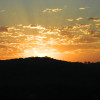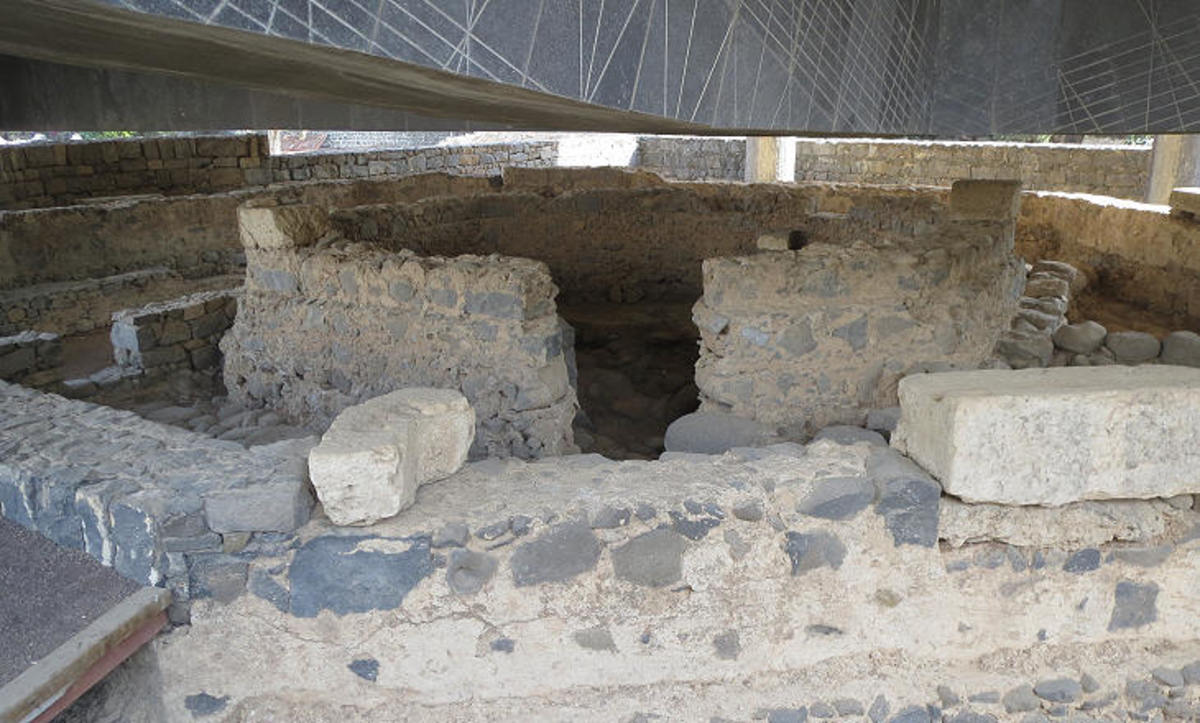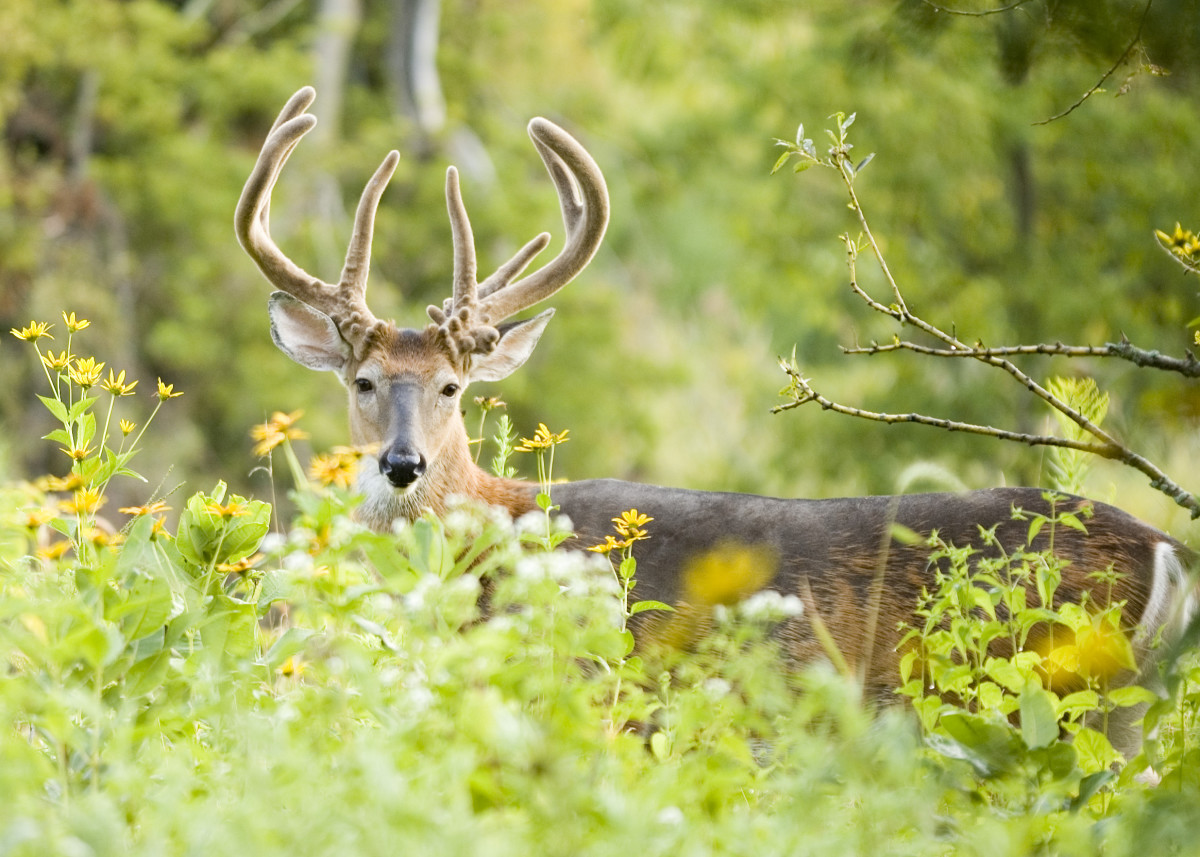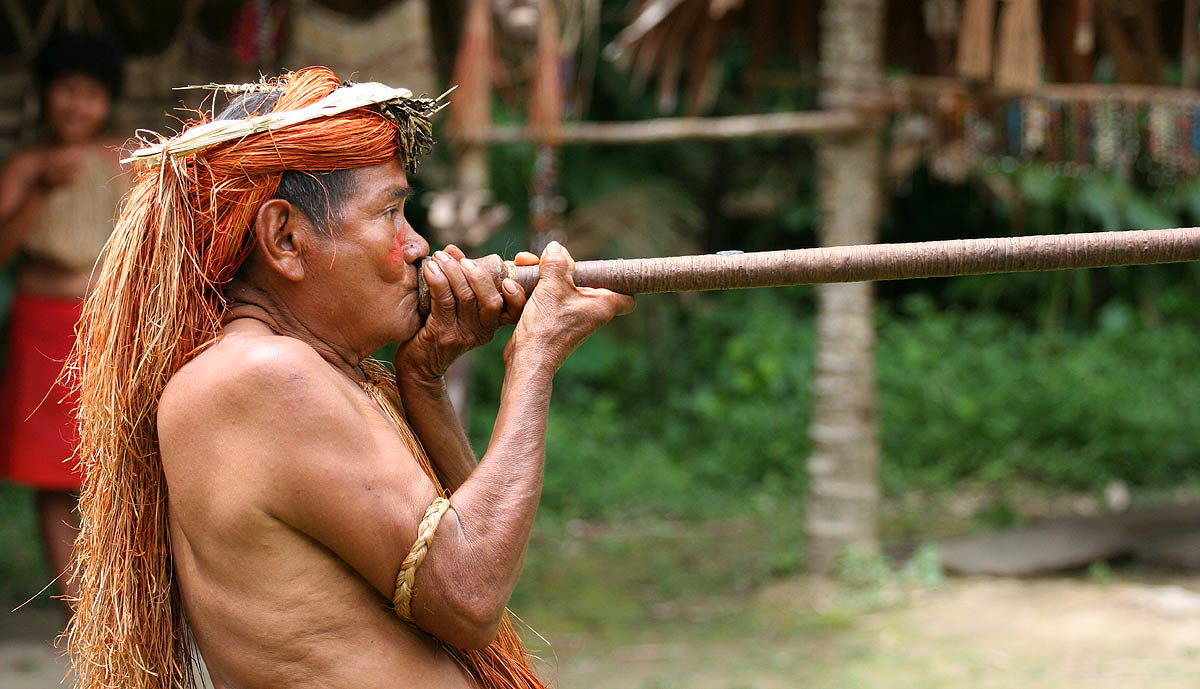A Personal Reflection On Archery Hunting For Deer In Missouri
It has now been some forty years since I first went deer hunting; forty years of sweat, freezing rain, snow, heat; just about any weather situation you could imagine, I have hunted in. In knee deep snow and ice while after Mule Deer in Colorado with temperatures well below zero to early September days in Missouri when temps hit triple digits, I have pursued these wonderful creatures. Not always with the success that some might call a success, but people tend to have their own view of what makes a success. To one, it might be a wall hanger of a buck; to another a freezer full of tender venison. Another might call a close call a success while yet another might call a day spent in God's greatest creation a success. I fall somewhere in each of these definitions, depending on the day. Today, I feel a day spent in happiness is what qualifies it to be a successful day.
But I wasn't always like that. No, sir; I wasn't.
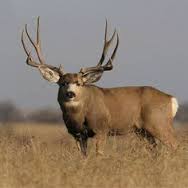
The Early Years
My early years were spent reading and absorbing every paragraph, sentence, nuance I could decipher from the leading magazines. Or listening spellbound to some older friend as he relayed a story to me. I also know now that more than one of these stories were not exactly accurate, and probably were complete fabrications. All in good fun, and I consider those times well spent.
As a teenager, I followed whomever I could pester into taking me hunting for Whitetail Deer. My father wasn't a Whitetail hunter, rather he desired the Mule Deer of the high Rocky Mountains. I understand why, and I loved that challenge as well. But the reality was I have only been out there to Colorado three times, and have only a single Muley to my credit. Once I wasn't old enough; the second time it was hotter than blue blazes; but the third times the charm so they say; and it was. One shot from my 30.06 at just over 200 yards resulted in my tagging a nice fat Muley buck.
But back home in Missouri resided another deer, the Whitetail. Perhaps not as big as a Mule Deer but definitely a worthy and wary adversary. It took me a few years before I finally got to put my tag on one, a nice nine pointer that dressed out large enough to feed the family for almost a year. And he was in a very strange place.
Camp Crowder, now known as Fort Crowder is a National Guard location just south of Joplin. Back in the day this was a very heavily hunted location, as every Tom, Dick, and Harry with a gun would go here to hunt for a deer. I know; I saw them.
All of them. At times, it looked more like a hunting store with blaze orange jackets and vests for sale than a section of wilderness. Once I saw a poor little forkhorn buck running for his life through a field as one after another hunter took a shot at him. Boom! Boom! Boom! Boom! He escaped, whether through his speed or their inability to shoot straight I cannot say.
I sat along one of these lines a couple of hundred yards off the road for the first year or two, but soon tired of it once I was shot over. While crossing one of the myriad of dirt roads here, I saw a buck crossing about a hundred yards away. I dropped to one knee, carefully placed my crosshairs on his shoulder and just as I was beginning to squeeze the trigger, I heard a BOOM! behind me, a WWHHEEEEEE as a bullet whizzed near the right side of my head, and saw the bullet bounce about fifty yards in front of the buck in the dirt. The guy behind me said, and I quote:
"What are you so mad about? I shot over your head."
That pretty much ended my gun hunting for a long time. Too many nimrods with licenses and no sense for me! And soon thereafter came the semi-automatic assault weapons disguised as a hunting rifle. I knew what damage could be done with a lever action or bolt action gun, I didn't want to see what someone with a semiauto rifle and 30 round banana clip would do. When I went back some years later I went with a friend to the same general area (with much nervousness) but we went much deeper into the area. Turns out there was a lot of land there, far more than the couple of hundred yards I had been. We hunted the morning away in an area which was quiet and saw a few, but nothing worth shooting. We had moved close to a half a mile into the area, still hunting various sections of woods here and there with minimal success. Then, as we were walking back towards the car for lunch a nice buck stood up in the field in front of us. I quickly had my rifle to my shoulder, placed the crosshairs on his shoulder and gently pulled the trigger until the gun went off. Down he went! I had my first Whitetail. A nice nine point buck close to two hundred pounds on the hoof. Made for some good eating!
So, what happened here? Why was this buck where he was? Well, this old buck had patterned the hunters for several years and knew they would be moving near the parking lot and road early on so he stayed away from that part of the area. Once things began to settle down in the middle of the day he began moving into the fields of tall grass where no one hunted. With the woods full of hunters, the field held the smart deer.
This deer had patterned the hunters.
Lesson: pay attention to the areas everyone else ignores. Oftentimes they can be a gold mine. Once most people start heading back to their vehicles for a lunch break, sit tight and wait. When the woods clear out of hunters, the wary bucks will begin moving to their secluded hideaways for the duration.
On another occasion I had been hunting this area far from the maddening crowd and discovered a deeply hidden pond. And I mean hidden! Even knowing where it was and how to get to it I never found it on the first try. Never. I've even pulled the area up on aerial photographs and can't find it. It was surrounded by evergreen trees and was only maybe a hundred feet across. But the deer would get out of their beds deep in the woods during the day and get a drink here. I can't count the number of deer I have seen on this pond over the years.
And this is on a completely wide open public hunting area, where one can rifle, bow, or blackpowder hunt; duck hunt; rabbit hunt; bird hunt; anything. It gets more traffic during deer season than the mall does during Black Friday but I have never seen another hunter within a hundred yards of it.
Lesson: walk the area to come to know it. Use your feet!
My Middle Years
As I grew older I took particular pride in finding deer where others couldn't. It might be along a slippery river bank, or in a head high field of grass, or maybe even behind a college. Yep, behind a college.
I found this area by looking at a map of Joplin. There is a creek that runs basically all the way across the city East to West, joining with another creek West of town. I had seen a couple of really nice bucks get hit along a major road on the West side of town, and noticed they were right along where this creek flowed. A little adventurous hike led me to find an area behind a local college that was untouched by hunters. Once I found the owner and secured permission, I was hunting in a virgin territory. Herds of ten and twelve does at a time would meander around, pursued by a buck or two intent on catching up. It almost wasn't fair, but oh well; it was fun!
The area was close to a thousand acres of woods completely inside the city limits, and untouched. I had grown up near there and completely ignored it as a child but as an adult... well let me tell you I no longer ignored it!
Lesson: seek out those unusual places, use a map or aerial photography to see what the area looks like.
Ask the police or Conservation Officers if there is a particular area that seems to have a lot of auto/deer accidents and coordinate with landowners. You might find your own gold mine.

As I Aged...
I eventually did gain access to some private land. My aunt owned a bit of land north of town that spanned a narrow area between two major rivers. In the olden days this area was a haven for outlaws, and was called The Narrows. She reluctantly allowed me to bow hunt but with the restriction that I could not shoot anything. Huh? Hunt, but not shoot? Those were her conditions. I went to the adjoining landowners and by telling them I was her nephew and had her permission to hunt her land they agreed to allow me to hunt theirs. I did quite well, using her land as a jumping off location before easing onto theirs farther from the road. But eventually she found out I had taken deer and even though they weren't on her land, she felt that they lived on her land and kicked me off. And by not being able to hunt her land the other landowners wouldn't let me hunt their land anymore.
She was strange that way.
As I continued to age, I found I was less willing to put up with anyone else hunting where I was at. And, as I did not own sufficient land to hunt on nor did I have any friends or other relatives who had land that meant I had to find places that were public, but not heavily hunted. So for a period of several years (after the city bought the land I had hunted and made it a no hunt area) I spent more time searching than hunting. Seemed every bit of conservation land had hunters. Then I hit upon a formula that led to my most successful hunts in my life: what TYPE of hunting was allowed.
Most areas I knew of were primarily rifle hunting for deer areas. As I had ceased rifle hunting, that meant that if I did hunt with a bow I usually came into conflict with gun hunters who were pre-hunting; that is they were scouting, setting up their blinds and tree stands and staking out where they wanted to hunt. Most were not too bad but some were far beyond protective. At times they would literally run me out of the woods, shouting and urinating where I was hunting in order to make sure I would not have any deer there to hunt.
So, I began to focus on smaller, less conspicuous areas that were archery only or muzzle loader/archery only. When I did that, I found deer. Lots of deer. And there were some BIG deer. Some areas were fairly large (for Missouri) at 1,000 acres and up; others were quite small, ranging from 25 to a few hundred acres. But the common denominator was the lack of hunters.
So, a reasonably small conservation area with a good population of deer and no hunters. What else is needed? Well, as the deer are here there must be shelter in some form. But what form should we be looking at? Deep woods? Well, if we are on small acreage there can't be too much in the way of deep woods, can there? What other forms of cover can be a good home for deer? Windrows which lie along and around fields can hold deer; creek bottoms are another good source. But each of these can be fairly limited in hunting situations, meaning that your location for a blind may be only a single tree or two. And the chance that a good buck will walk by your one spot at the moment you are there is minimal. So, how to up the odds?
My favorite location to hunt came along after several years of exploring the area. Originally it was 750 acres but some former private land was added to it and it now lies at just under 1,000 acres. A creek runs North through it, just East of center on the property. The eastern portion is steep, the land falling away to the creek and is comprised of fields; just tall grass. The western portion has more fields and several ponds. Each pond has a drainage that leads to the creek, and each drainage is brush filled to the extreme. Nowhere is the brush more than a hundred yards wide so what exists it a fairly narrow, brush choked highway leading from the creek and woods across the prairie to the pond. The fields are natural fields filled with prairie grass and assorted small bushes and weeds, standing roughly four to five feet in height.
And the deer love it here. They are like rabbits, bedding down in the wide open spaces where the wind can cool them in the late summer/early fall, free from any predator sneaking up on them. As the rut comes closer the bucks begin cruising this area heavily, stalking along the edge of the brush, making rubs and scrapes, and taking ownership of the turf. They will chase all smaller bucks out to the edge of the brush and woods and lay claim to the center of the fields and every doe there.
And that, my friends, is where I came to hunt. Along one side is a stand of Persimmon trees, or as I like to call them "Deer Candy". Deer will stand and feast on these tasty fruits as they ripen and fall to the ground. A stand near here is guaranteed a doe at the least or a buck chasing a not-quite-ready doe. And while he waits for her to accept him he makes more rubs, more scrapes, chases any would be suitor away or even battles him to prove who's the boss buck. As there are almost no hunters (at times I have hunted this area for an entire season, September 15 through January 15, and not seen another archery hunter) the deer are comfortable, moving about more frequently in the daytime hours. Amazing!
Adjacent to it lies a large (1,500 acre) cornfield. If I so choose, I can set up a blind or tree stand along the fence line that separates the private cornfield from the public hunting area and wait for the deer of my choice to come back from a night of feeding, or catch them as they amble towards the field in the late afternoon. Again, they follow the small creek edge that runs along the area, up the draws filled with brush and right to my stand. It's called a funnel, as the topography "funnells" the deer to where I am, which was chosen due to my scouting the area both on foot and aerial photos.
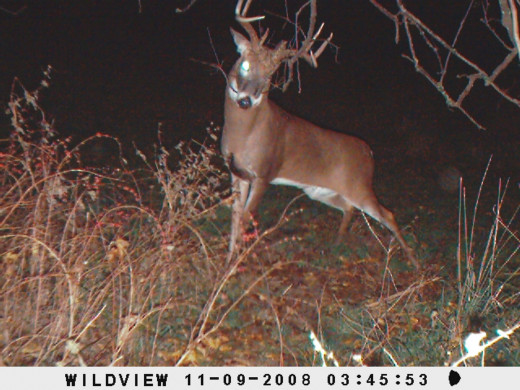
I'll bet you're wondering...
I will bet you are wondering "If this area is so filled with deer, why aren't more people hunting it?" Well, I have an answer for that question. Ready?
Work.
Simple as that. It takes work to hunt it properly. From the parking area to where I BEGIN hunting is a solid mile. One solid mile of hiking in carrying a blind, a stand, gear for the day, chair, archery equipment and/or any other paraphernalia needed for a full days hunting. Most people are too damn lazy to work this hard. Remember back in my first section where I said most people stay within a couple of hundred yards of a road? It's true.So this bonanza, this public hunting area where I have routinely seen between twenty and forty deer in a single day's hunt I basically have had to myself for some fifteen years, taking multiple deer from it because I am willing to work a bit more than the average hunter.
It took me a couple of years of never seeing anything, only finding sign (and we all know you can't eat sign) that there were deer here before I learned the area well enough to understand that this was an entirely different type of hunting. You don't sit in the woods, waiting for one to come along; you go to where they are, ease into the edges of their bedrooms and set up shop there. Oh, you have to be careful and not spook them with your scent, loud noises and such but if you are careful you can get into position for a wonderful evening hunt.
And that leads me to the next tip: hunting when they are moving. I have known a ton of hunters who are movers, stalkers, walkers. They see deer but cannot understand why they aren't taking one.
Could be because the deer hear and see you before you see them, and when you do you are most likely seeing a white flag waving and bouncing as they scamper away from you.
I have spent more mornings than I care to think about getting up at 4:00 AM, driving for an hour, walking for another half hour, setting up shop in a field or tree, and waiting. Waiting. Waiting. Fairly often, I would see small bucks or does exclusively. Then I noticed as I was walking out in the dusk deer moving all over the place. So, in this particular area, it was a far superior evening location than morning during the normal, non-breeding seasons. When the deer are in a summertime pattern or early fall pattern, their focus is on feeding. Thus, they begin moving out an hour or two before the sun goes down, staging in specific areas until they feel safe enough to wander out to where they desire to feed. If it is a field of soy beans or corn, adjacent to a large field filled with tall grass they will make their way from their bedding areas to the edge of the tall grass fields. A little scouting during the middle of the day will show you a likely staging area. It might be an areas trampled down, some grass nibbled upon or simply a hefty group of deer poop. This will be their comfort zone. Stay out of it if possible, rather set up between this area and their food source. That will be your ticket to filling your tag.
Lesson: Know when the deer you are hunting are moving. Just because you want them to move doesn't mean they want to move. Remember: you are hunting them, so pattern them based upon their daily movements.
One year, while using my trail cameras I learned of a particular doe that was using a specific stand of persimmons between 5:30 and 6:00 PM every single day. I moved in around noon, set up my ground blind, used a good scent killer spray, measured out the yardage I was comfortable shooting with my bow, and waited. At 5:40 PM, she came walking by the blind and presented a shot of ten yards, quartering away. Perfect. A draw, sight, and release resulted in a perfect shot and thirty seconds later I was walking to where she lay waiting for me less than fifty yards away.
On this occasion, it was my knowledge of the persimmons dropping their ripe fruit combined with a camera's pictures detailing the exact time this deer was visiting each day. And again, public land filled with deer and no hunters made this trip a success.
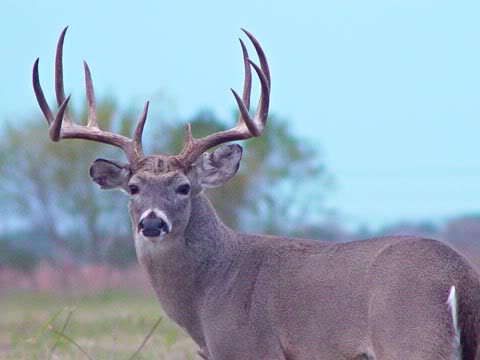
Of course, not every trip can or will be as easy as this one was. While hunting this location I came to know one particular buck quite well; Brutus. Brutus was, well a brute. Hands down the biggest buck I have ever seen in Missouri. Now I have taken bucks well over two hundred pounds, some approaching two fifty but Brutus makes them look like a yearling.
The first time was on a cold, windy day the Sunday before rifle season. I had my ground blind set near where these persimmons were dropping, adjacent to two of the brush filled draws. I heard a sound and turned to my left. There I saw a demon, smoke blowing out of his nostrils, slobber dripping from his lips as he chased a young buck out of the draw towards me. I was not able to draw my bow, I was so shaken. When I finally did, he had done his job, the young buck was gone and Brutus headed back into the draw.
I came back up on Wednesday to set up for an evening hunt. It was now in the mid 70's, a warm south wind and no clouds in the sky. Figuring Brutus was with a doe and wouldn't leave her for much I thought that he might get a drink in the pond in the heat of the day. As I stood on the dam of the pond deciding where to set up, I heard a sound behind me. Closing my eyes I knew what it was: a deer blowing because it had seen me. I slowly turned around and there stood Brutus, broadside thirty yards away. There was no chance for a shot so I concentrated on looking at him. Wide antlers, maybe 20 to 22 inches wide; heavy beams, G2 and G3 tines over a foot long; the rest of his antlers completely clean, a perfect ten point rack. His belly was far below his chest indicating he was an older buck. As he turned to amble away from me I confirmed his antler width against that wide pot belly he had and began measuring him in my head.
Okay, inside spread a conservative 20", each beam well over 20" in length; counting in his tine length and the circumference of his beams plus his tip to tip spread equals...
Oh my goodness. To make the Boone and Crockett record book a Whitetail must be over 180". To make Pope and Young (Archery) record book it is much lower. Brutus made both with room to spare.
I saw that buck five more times over the next three years, never with a good chance. My son went hunting with me on his first Youth Muzzleloader hunt the next year and had a shot but was so stunned by his nearness and size he simply stood and stared until it was too late. The last time we saw him he was somewhat diminished, looking quite old, grey and his antlers smaller and thinner as befits an old buck. He looked at us from a distance and turned to re-enter his refuge. We never saw him again.
That old buck knew every inch of his area, and he lived in that open field and draws for his entire life. After I saw him the first two times I sent a friend who hunted with blackpowder (muzzleloader) up to see if he could take him. He was hesitant, thinking I was joking or exaggerating; he quickly found out I wasn't. He saw him the opening evening, just a few days after I had seen him the second time. No shot was available, so he waited. The next evening, he saw him again but this time he was fighting with another large buck and this went on for almost a half an hour, until it was too dark to see. He finally got a shot the following Tuesday and eventually got a huge buck. But when I saw the rack I knew it wasn't Brutus, more than likely it was the other buck he was battling before. When I measured this buck it was a solid 160"+ buck; a true trophy and the largest my friend had ever taken. He was beside himself with joy and actually bought me a muzzleloading rifle as thank you, saying he wanted me to go hunting with him next year.
We had fun the next year and even saw ol' Brutus again, over two hundred yards away just looking at us as we looked at him through our binoculars, begging him to come just a bit closer.
Another hidden gem in plain sight...
Another area I came to hunt was located just south of a town I worked in for a few years. It was another mostly prairie conservation area, had a creek running East to West across it, and had some of the same features as the other area: namely, ponds, draws, and brush filled bottoms. But this area had a small (100 acre) section of woods near a corn field completely separate from any other woods. Deep inside this little section, which ran along the creek, was a small pond, no more than twenty feet across. Just a short distance way in the tight timber was a pear tree which had long ago been blown down during a storm. That tree must have stood seventy feet tall at one point and the fact that it was laying down in no way hurt its ability for producing fruit and each fall there would be standing room only around this tree for the deer. Year after year I could find deer around this tree when the fruit was ripening.
Lesson: KNOW your area inside out!
Today...
At this time I no longer am hunting. Gave it up. Why? Well, no one to go with for one. My children all enjoy fishing but not one likes those early morning jaunts with me anymore, I guess. Getting up at 3:30 or 4:00 in the morning to drive an hour, walk another half hour then set up, and try to stay awake? Nah, and to tell the truth I am not such a fan of those days as I once was. Plus there seems to be fewer deer anymore, at least where I live. Maybe the cause is the Chronic Wasting Disease, or Blue Tongue although no "certified" cases of these have been authenticated. Could be because of Mountain Lions moving through and into the area, although the MDC refuses to say this is occurring on a high level. I have seen one live and in person, at less than 100 yards while looking at him through my 16x binoculars so I know for a fact they are around.
Or it could be the economy. As things have gotten tougher the deer have disappeared. Personally, my wife and I feel there is a certain amount of illegal hunting going on year round and that is a prime reason for the fewer deer. Where we lived we would consistently have deer travel through our front yard, groups of two to ten but no more, and not for a couple of years. Others in the area have noted this as well so I am sure they are not just moving elsewhere in another yard. Trail cameras have failed to get a single picture for months at a time, even when we fed them corn during the harsh winter months. Squirrels and rabbits galore but no deer.
So, I sold all of my items, gave away others and am relegated to fishing for the remaining years of my life. Could be worse: might be no fish to catch!
Well, I hope you've enjoyed this little deer hunting lesson. Now get out there and find some for yourselves! And good luck to you.
